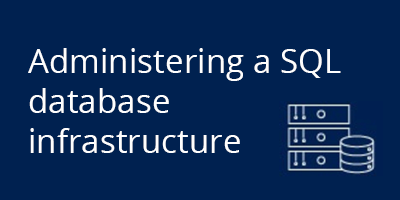Description
Introduction of SD-WAN for Enterprise Networks
Software-Defined Wide Area Networks (SD-WAN) are revolutionizing enterprise network architectures by providing greater flexibility, control, and cost-efficiency. With SD-WAN, enterprises can dynamically direct traffic, prioritize critical applications, and maintain high security across geographically dispersed locations. This course will focus on the design and optimization of SD-WAN for enterprise networks, including strategies for deployment, scalability, performance tuning, and ongoing management to ensure optimal network operations.
Prerequisites
- Basic understanding of networking concepts (LAN, WAN, routing protocols).
- Familiarity with SD-WAN architecture and its components.
- Experience with enterprise network design and cloud technologies.
Table of Contents
1. Introduction to SD-WAN for Enterprise Networks
1.1 What is SD-WAN and its Benefits for Enterprises
1.2 Key Components of SD-WAN Architecture
1.3 How SD-WAN Differs from Traditional WAN Solutions
1.4 Challenges in Enterprise WAN Optimization
1.5 Core Principles for Designing an Effective SD-WAN
2. Assessing Enterprise Network Needs for SD-WAN
2.1 Understanding the Business Requirements for Connectivity
2.2 Evaluating Existing WAN Infrastructure and Gaps
2.3 Identifying Critical Applications and Traffic Flows
2.4 Determining Security, Compliance, and Performance Needs
2.5 Building the Case for SD-WAN Adoption(Ref: Mastering SD-WAN for Secure and Scalable Connectivity)
3. SD-WAN Design Models for Enterprises
3.1 Choosing Between Cloud-based, On-premises, and Hybrid Models
3.2 SD-WAN Topology Design: Hub-and-Spoke vs. Full Mesh
3.3 Integration with Existing WAN (MPLS, Broadband, LTE, etc.)
3.4 Multi-Cloud Connectivity Design Considerations
3.5 High Availability and Fault Tolerance Design in SD-WAN
3.6 Key Considerations for Edge Device Placement
4. Optimizing SD-WAN Performance
4.1 Traffic Steering and Path Selection Strategies
4.2 Prioritizing Critical Traffic (Voice, Video, Application Traffic)
4.3 Bandwidth Optimization and Quality of Service (QoS) Policies
4.4 Leveraging Application-Aware Routing for Performance Improvements
4.5 SD-WAN Performance Monitoring and Metrics
4.6 Ensuring Low Latency and High Throughput for Critical Applications
4.7 Troubleshooting SD-WAN Performance Issues
5. SD-WAN Security Architecture and Best Practices
5.1 Implementing End-to-End Encryption Across SD-WAN Links
5.2 Secure Connectivity for Cloud Applications and Data Centers
5.3 Integrating Firewalls, Intrusion Detection, and Anti-DDoS Solutions
5.4 Zero Trust Security Models and Access Control in SD-WAN(Ref: SD-WAN Implementation: Best Practices and Configuration)
5.5 Secure Direct Internet Access (DIA) Configuration
5.6 Continuous Monitoring and Security Best Practices
6. SD-WAN Policy Configuration and Automation
6.1 Defining Network Policies for Traffic Routing and Security
6.2 Automation of Configuration Changes and Management Tasks
6.3 Implementing Centralized Policy Management
6.4 Role-Based Access Control (RBAC) in SD-WAN Networks
6.5 SD-WAN Policy Templates and Dynamic Policy Adjustment
6.6 Leveraging SD-WAN for Seamless Policy Updates Across Multiple Sites
7. SD-WAN Implementation for Multi-Site and Global Enterprises
7.1 Deployment Strategies for Branch Offices, Data Centers, and Remote Sites
7.2 Designing SD-WAN for Geographically Distributed Sites
7.3 Integration with Legacy Network Infrastructure and IoT
7.4 Multi-Site and Global SD-WAN Deployment Considerations
7.5 Efficient Bandwidth Utilization Across Global Networks
7.6 Case Studies: Successful SD-WAN Implementations in Global Enterprises
8. Scaling SD-WAN for Future Growth
8.1 Planning for Network Expansion and Scalability
8.2 Adding New Sites and Cloud Locations Seamlessly
8.3 SD-WAN for Hybrid Cloud and Multi-Cloud Environments
8.4 Optimizing SD-WAN as Network Traffic Increases
8.5 Managing SD-WAN Performance and Security in Scalable Environments
8.6 Addressing Scalability Challenges in SD-WAN Deployments
9. SD-WAN Monitoring and Ongoing Optimization
9.1 Real-Time Monitoring with SD-WAN Dashboards and Analytics
9.2 Collecting and Analyzing Network Data for Proactive Management
9.3 Performance Metrics: Latency, Throughput, and Packet Loss
9.4 Automating Alerting and Incident Response for SD-WAN
9.5 Troubleshooting SD-WAN Connectivity and Application Issues
9.6 Fine-Tuning SD-WAN Performance and Security Settings
10. SD-WAN and Network Evolution: Looking Forward
10.1 The Role of SD-WAN in the Transition to 5G Networks
10.2 The Future of SD-WAN with AI, Automation, and Edge Computing
10.3 How SD-WAN Supports Digital Transformation and Cloud Adoption
10.4 The Intersection of SD-WAN with SD-Branch, SD-LAN, and IoT
10.5 Trends Shaping the Future of SD-WAN and Networking
11. Conclusion on SD-WAN for Enterprise Networks
11.1 Key Takeaways from SD-WAN Design and Optimization
11.2 Best Practices for Ensuring Successful SD-WAN Deployment
11.3 Ensuring Future-Proof Network Scalability with SD-WAN
11.4 Continuous Improvement: Evolving Your SD-WAN Strategy Over Time
Designing and optimizing SD-WAN for enterprise networks requires careful planning, thoughtful consideration of business and technical requirements, and the integration of best practices for security, performance, and scalability. By leveraging SD-WAN’s capabilities for dynamic traffic management, centralized policy control, and enhanced security, enterprises can create a network infrastructure that is more agile, cost-effective, and resilient to meet the demands of a digital-first world. The future of SD-WAN holds even greater potential as businesses continue to expand and integrate next-generation technologies such as 5G, AI, and edge computing.






Reviews
There are no reviews yet.